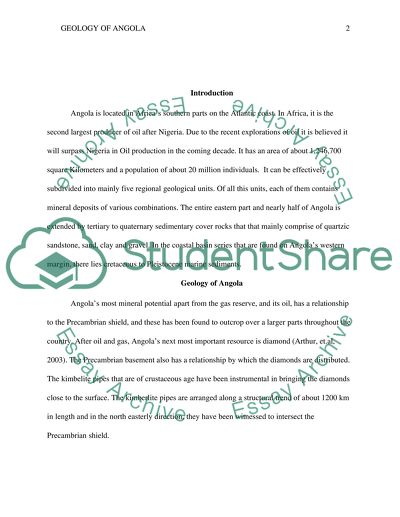Cite this document
(“Why is there oil in Angola What is the geology of the Area How and Essay”, n.d.)
Why is there oil in Angola What is the geology of the Area How and Essay. Retrieved from https://studentshare.org/physics/1699003-why-is-there-oil-in-angola-what-is-the-geology-of-the-area-how-and-when-did-the-land-form-the-common-point-with-other-african-countries-with-oil
Why is there oil in Angola What is the geology of the Area How and Essay. Retrieved from https://studentshare.org/physics/1699003-why-is-there-oil-in-angola-what-is-the-geology-of-the-area-how-and-when-did-the-land-form-the-common-point-with-other-african-countries-with-oil
(Why Is There Oil in Angola What Is the Geology of the Area How and Essay)
Why Is There Oil in Angola What Is the Geology of the Area How and Essay. https://studentshare.org/physics/1699003-why-is-there-oil-in-angola-what-is-the-geology-of-the-area-how-and-when-did-the-land-form-the-common-point-with-other-african-countries-with-oil.
Why Is There Oil in Angola What Is the Geology of the Area How and Essay. https://studentshare.org/physics/1699003-why-is-there-oil-in-angola-what-is-the-geology-of-the-area-how-and-when-did-the-land-form-the-common-point-with-other-african-countries-with-oil.
“Why Is There Oil in Angola What Is the Geology of the Area How and Essay”, n.d. https://studentshare.org/physics/1699003-why-is-there-oil-in-angola-what-is-the-geology-of-the-area-how-and-when-did-the-land-form-the-common-point-with-other-african-countries-with-oil.


